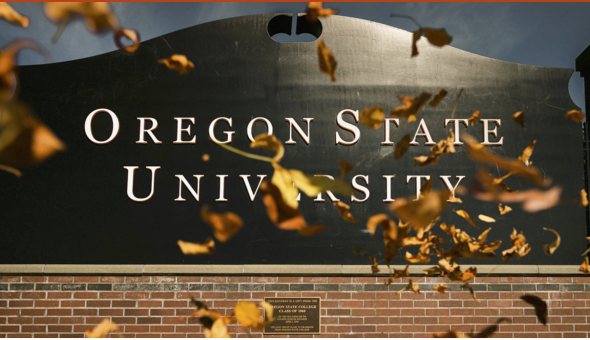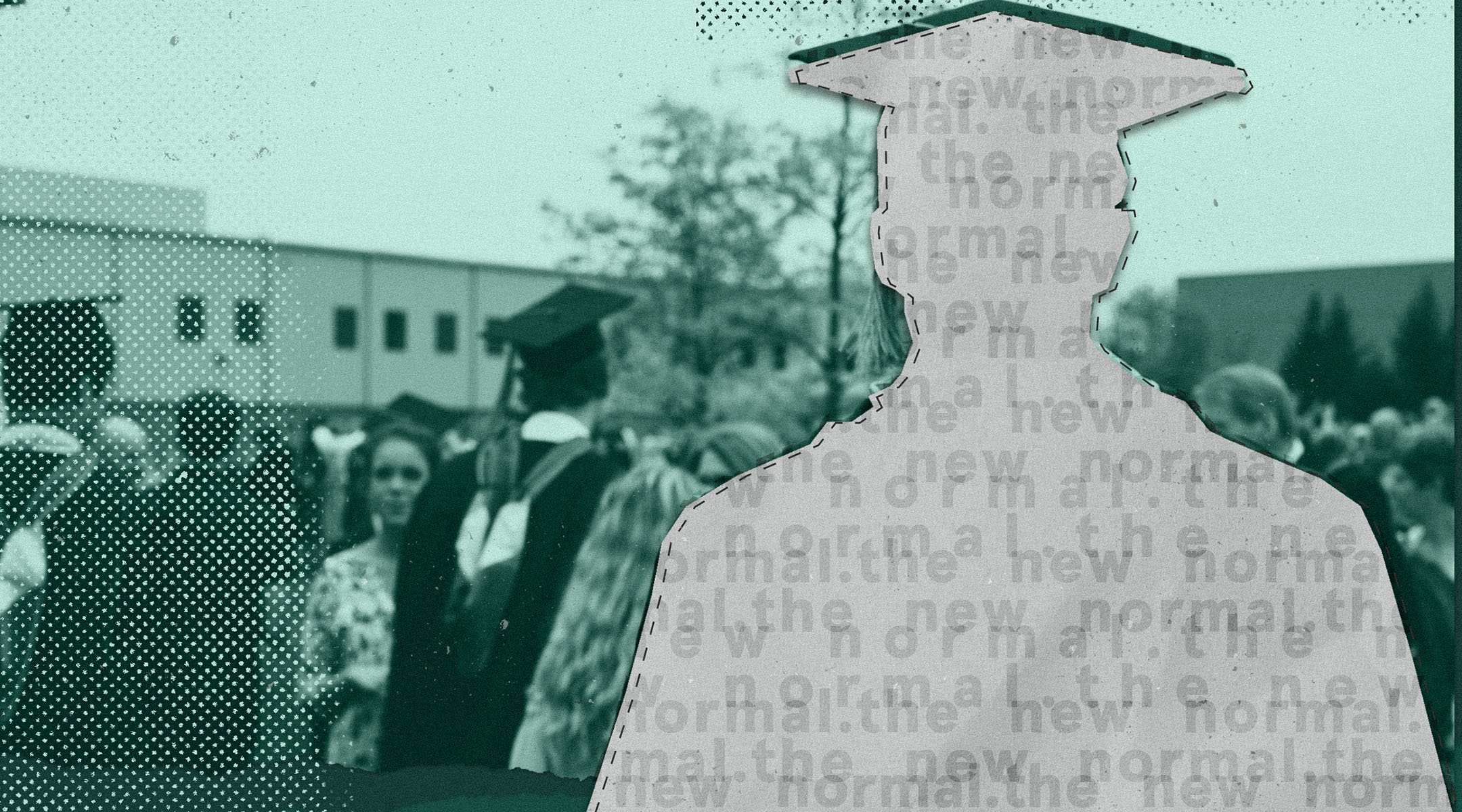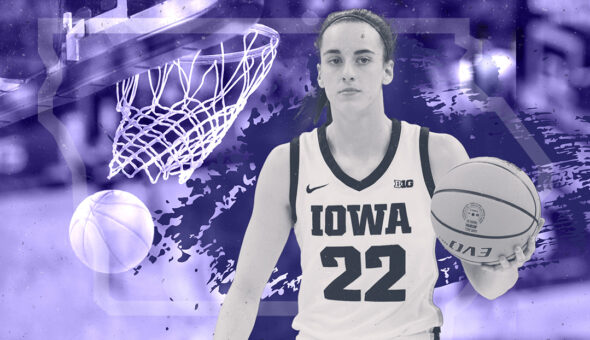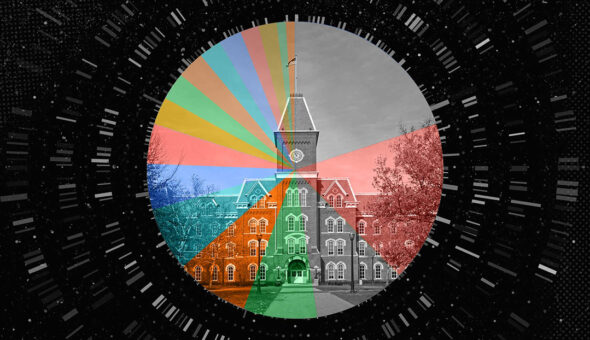OSU administrators are pleased with those statistics, given fears that they could have been more dire, said Steve Clark, vice president for university relations and marketing. “It indicates [OSU students] are committed to learn and get their education no matter the situation they find themselves in.”
What do students think? We asked a few, and they told us.
But beyond the current anything-but-normal quarter, students at OSU and around the country will need to decide if they want to continue paying tuition to take courses remotely while living at home or off-campus. And graduating high school seniors will soon need to decide where they will enroll for college not knowing if their first-choice school will be able to welcome them to campus.
In such a logistically uncertain and financially volatile time, higher-ed consultants say universities must do even better when it comes to engaging students and communicating the various offerings they will offer, now and in the future.
Empathy and Truth Required
No one can say how long the “new normal” will persist. States are setting their own timelines for reopening businesses and relaxing stay-at-home orders at the same time federal government officials say social distancing practices could continue for months. With little certain, plans for colleges and universities in the fall vary as much as those of the states.
“Truth is better than silence.”– Sam Waterson, RHB
By the end of April, some universities intended to open with students living on campus while others altered their schedules to blunt effects of a possible Covid-19 resurgence in the second half of the year. However, most universities had not committed to any plan and several contacted for this article declined interviews. Additionally, many schools pushed back the May 1 deadline for high school seniors to commit. The new date to send a deposit is June 1, but no one can say if there will be more clarity in a few weeks.
OSU is one of several schools that moved the decision date for graduating seniors to June 1. “What we are planning for is to reopen our campus-based instruction in phases over the next several months. We don’t know how many months that will be,” Clark said. A May 1 statement from OSU’s president said the campuses could reopen as soon as late May or June, but that is dependent on the overall Covid-19 situation in the counties where they operate.
Still, universities must build a budget and convince admitted students to attend whether that means moving into a dormitory or joining a class through Zoom. When interacting with those prospective students, enrollment marketers and recruiters should take extra care, said Sam Waterson, president of RHB, an Indianapolis-based higher education marketing and design consultancy. In the short-term, empathy for students and families is increasingly important. Job loss, a sick parent, the anxiety of traveling far from home are all real concerns that didn’t exist for many a few months before.
Extra communication, even if light on specifics, can help. Messaging such as ‘We can’t really say if we will begin on campus in the fall. Here are our current plans,’ or ‘Here’s when we will decide,’ can still help students and families with their own decision-making, Waterson said.
“It’s truthful and it’s better than silence,” he said. For most parents and students, “that level of honesty will pay off.”
“What we are planning for is to reopen our campus-based instruction in phases over the next several months. We don’t know how many months that will be.”– Steve Clark, VP University Relations, Oregon State University
Beyond this year, Waterson wonders what impact the decision not to require SAT or ACT scores by a growing number of schools will have. If high school students don’t take the college boards, recruiters and marketers cannot buy names and addresses of students with qualifying scores. An important generator of marketing leads is lost. Students could be attracted to the names of the colleges they know and won’t have reason to consider other schools, he said.
The Million-Dollar Question: Is the Online Version Worth It?
To compete in uncertain times, several institutions announced tuition freezes for 2020-21, including OSU, which approved a freeze for returning undergraduate students. Southern New Hampshire University is offering a one-time grant to cover the first year of tuition for entering first-year students. Davidson (N.C.) College even rolled out a deferred tuition plan for the fall semester.

At the same time, many of the same institutions are bracing for revenue shortfalls with salary freezes and furloughs for employees, a sharp decline in full-freight international students, and projected funding cuts for public universities by state legislatures. But temporarily teaching remotely doesn’t save schools any significant money; they can’t charge for room and board, but faculty and administrative salaries remain. Plus, investment in learning management platforms and other technology to offer quality online education carries significant up-front cost. Worse, professors are largely not experienced in teaching remotely and don’t have – or may not be comfortable using – the latest digital platforms and software, said Lucie Lapovsky, a higher education finance and governance consultant and former president of Mercy College in New York.
“If you think your school is going to be (only) online in the fall, should you stay with your college that is more expensive and not offering a fulsome online experience?” she asked from the student perspective.
Therefore, it is key to message to students and parents that online classes are temporary and the institution is prepared to welcome students back to campus as soon as it is safe to do so, Lapovsky said.
If a socially distanced, stay-at-home scenario prevails into the fall, it’s not just possible students will begin to question the value of online education at the same cost of the on-campus experience they signed up for – it’s already happening. One group of students has filed a class-action lawsuit asserting that tuition for the spring 2020 semester should be refunded, and reports of petitions circulating at a handful of schools show some students do not think Zoom learning justifies the high tuition, and believe refunds are in order.
There is real risk that students will more critically question each experience they pay for as part of attending college. If refunds occur, on-campus higher education could come to be seen as a luxury good, Waterson said, exacerbating socioeconomic divides that already exist over who can and can’t afford on-campus learning. “You’re assigning a value to that. It exposes issues of access in a … raw way.”
Mission Possible: Articulating the Value of Campus Life
For elite, well-resourced institutions with international reputations, a more critical consumer won’t matter much. Enough parents will still write the check, Waterson speculated. But for many more institutions without huge endowments and world renown, there could be a reckoning. Some will be agile enough to change their education delivery and how much they charge for it or to capitalize on an existing online program. Others may not survive, he said.
Schools who tout the benefits of living on campus, interaction with other students, or living-learning communities will benefit from articulating a message that paying to live on campus has value: Some things are better in-person than online.
Living in a pandemic, people have learned the importance of avoiding each other. Schools “will have to start defining what is important about being together,” Waterson said.
Despite the push into online remote learning, it remains a fact that students do not all learn the same way. Face-to-face interaction and exchanging ideas with a cohort are important facets of an education, said Charlotte Klaar, an educational consultant based in South Carolina, and schools can emphasize in their messaging the value that an on-campus, in-classroom experience provides.
“I think that kind of exchange of ideas, basic liberal arts, learn how to think, learn how to explore, will always happen when people get together to talk,” she said. However, Klaar said, the current pandemic’s reality means the full residential college experience as we know it might force schools to enter a new era with more socially distanced online learning. Students and universities need to adapt.
“For a while, it’s going to be both. Some people will learn on campus all the time, but some people will do something combined,” she said.
Back in Corvallis, Clark, the OSU vice president, could not say for sure what teaching and the OSU campuses would look like in future quarters. Classes could be a combination of face-to-face and remote learning. Some of the ECampus tools could be adapted for wider use, i.e. virtual labs or dissections. Taking a longer view, he mentioned that some of the institution’s first faculty would travel on horseback to reach students in distant Oregon towns. Later, faculty traveled by train and then offered a degree through correspondence and video. If the pandemic forces instruction to change, OSU faculty and students will adapt, he said.
“How we deliver education is changing, but the value remains,” he said.









